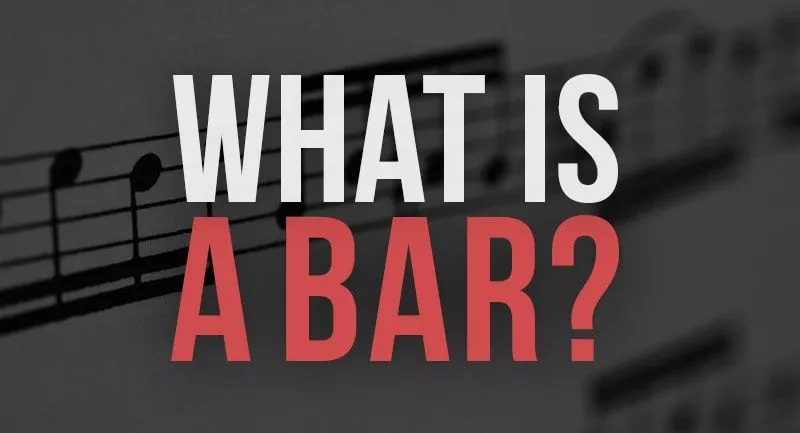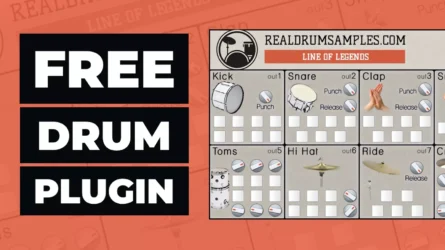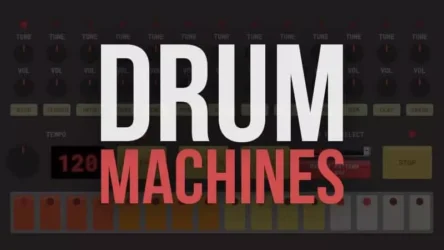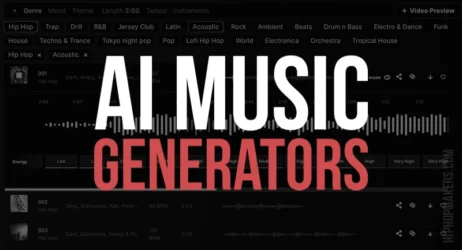Here we will explain what a bar in music is, how long a bar is, the difference between bars and measures, and share the importance of bars.
- What is a Bar in Music
- How Long is a Bar in Music
- How Many Beats in a Bar
- Why Are Bars in Music Important
- What is a Bar Line
- What is a Double Bar Line in Music
- What is a Measure in Music
- How Many Measures in a Bar
What is a Bar in Music?
A bar is a measure. Each measure is a five-line staff with four places for music notes, pauses, and other symbols. A bar or measure is the space between bar lines on this staff. The bar lines help to make the music easier to read. Beats also organize music, and the time signature specifies the beats.
Music is divided into bars, each with a specific number of beats (also known as measures). In a way, it’s similar to a container. When a song’s time signature dictates the number of beats in a bar, that’s how many beats are in a bar.
Time signatures show how many beats there are in a particular bar or measure and what sort of notes those beats are.
Each quarter note has its beat, and thus a measure in 4/4 has four quarter notes, and a measure in 6/8 has six eighth notes.

The word “bar” is undoubtedly familiar to you from hearing about music. Music theory may also be helpful if you’re just starting with an instrument and would like to brush up on your knowledge.
There are many reasons why you may not know what a bar is, but we’ll explain them all in simple terms, including how bars relate to time signatures and counting bars.
But first, let’s get the following points straight: To be clear, “measures” and “bars” mean the same thing.
Bars and measures refer to the section of a song that has a certain amount of beats.
Bars Explained
1. Bar Line
Measures are marked by a single bar line (or bar). There’s no need to pause or do anything extra at this point; just continue playing after it.
Only the last beat of the “container” may be seen on a single bar line.
2. Double Bar Line
A double bar line is identical to a single bar line with one exception: it marks the conclusion of a song’s section.
You just have to play beyond it, just as with the single bar line. Composers often employ double bar lines to denote the conclusion of a song’s verse or chorus.
3. End Bar Line
When you see the end bar line, you’ve reached the song’s conclusion. This is the point at which the game concludes.
4. Repeat Symbol
This repeat symbol has two dots on it, making it easy to identify. The dots pointing to the right indicate the beginning of a repetition segment.
The dots pointing to the left indicate the conclusion of the repetition segment. Repeat symbol dots, such as those in the example above, indicating that anything within the dots must be repeated once.
If you don’t see a beginning repeat dot (pointing right), you go back to the song’s beginning and repeat it.
How Long is a Bar in Music?
A bar is not measured in inches or centimeters or measured in musical time units like seconds.
A bar is a simple method to break up a song. Most songs have a repeating beat—a pattern, and we count and see whether the pattern repeats. So we know how to represent a bar.
We often count 1 2 3 4 1 2 3 4. That tune is ‘in 4’. Then, we need to determine how to split that bar, which is usually into four crotchets. So we have the bottom number. a 4/4 fraction
1 2 3 1 2 3 = 3/4.
Now for the question and answer. The tempo is determined by how slow or fast we count 1 2 3 4 etc. This is now called b.p.m., or beats per minute. So, at 60 bpm, 4 crotchets each bar equals 4 seconds. 2 seconds at 120 bpm. We don’t use a timer unless we’re composing for cartoons, movies, etc.
A bar is almost always four measures. If a musician says, “Give me four bars” without specifying the time signature, it implies four measures of four beats each (sixteen beats.)
Related: Free Online BPM Finders & BPM Tap Calculators
How Many Beats in a Bar?
It is subject to the time signature. Typically, there are two digits in a time signature: a top number and a bottom number.
A “measure” is defined as the number of beats in one bar. The top number represents the number of beats in the bar.
As for the bottom number, it indicates the type of note that counts as a beat.
In common time (4/4), this measure will have four beats, with quarter notes counted as one of the beats. A measure will be made up of four quarter notes, as follows:
The time signature 6/8, on the other hand, means that a measure will include 6 beats, with eighth notes counted as a beat in each measure. The measure would then have 6 eighth notes in it.
As for the number of beats at a bar or tavern, your venue’s level of arousal is a factor.
Why Are Bars in Music Important?
As for reading music without bar lines, it can be challenging. The bar lines assist in structuring lengthy notes into manageable pieces.
So, bar lines assist in arranging notes and communicating information about the rhythmic flow. You could keep time signatures with rhythmic sense without bar lines, but reading rhythms would be challenging.
Music also has a constant pulse. This pulse is used to create music. A phrase may be positioned differently in various sections of a piece of music or within the same section. As a result, the same word may sound different depending on the pulse position.
Jazz musicians frequently refer to “playing across bar lines” or beginning the same phrase on various beats or subdivisions. It’s all about sound and sensation.
Barlines indicate the regular pulse of the music, making it easier to understand how phrases fit around it in written music. Finally, bar lines are a notational instrument.
What is a Bar Line?
A bar (or measure) is one single unit of time in music theory with a specified number of beats performed at a specific speed.
To define bars, vertical bar lines that run perpendicular to staff are drawn at the start and the end of each section.
The division of a composition into digestible pieces helps musicians perform the music in the manner intended by the composer when composing music on a page.
A piece of music split into bars requires musicians to digest just a small portion of the music at a time, which allows them to stay focused on giving the greatest possible performance.
A piece of music may be divided into beat groups by adding bar lines to it. While the beats aren’t always seen in the music, they are (nearly) always sensed by the listener. You might conclude that this underlying beat serves to keep the music structured.
What is a Double Bar Line in Music?
A double bar line is a symbol in music theory that is used to indicate the separation between two parts or phrases of music and the beginning and end of a musical composition.
The time signature divides time into groups of pulses that are repeated at regular intervals.
A measure or bar is the distance between two bar lines that separates them. When a significant shift in the music, such as a key change or a meter change, the double line is often used.
Double lines are often utilized to distinguish between one full musical concept and another.
What does a finished bar line look like in terms of appearance?
Final bar line. It is the very last bar line in a piece of music. There are two bars in this version of the double bar lines (or more often known as the double bar), with the second bar being thicker than the first bar. It signifies that the piece or a movement of composition has reached its conclusion.
What is a Measure in Music?
In music theory, the term measure (or bar) consists of a single time unit composed of a specified number of beats performed at a specific speed.
When composing music on a page, composers divide their works into measures, which are easily digestible portions that aid musicians in performing the piece as intended by the composer.
A measure-based division of a piece of music reduces the time it takes for musicians to comprehend it, enabling them to focus on giving the greatest possible performance.
Vertical measure lines and otherwise bar lines that run perpendicular to staff are used to indicate the locations of measurements.
How Many Measures in a Bar?
In music theory, a measure (also known as a bar) is a single unit that contains a specific number of beats at a specific rhythm.
When composers are writing music on sheet music, they divide their works into measures, which are easily digestible pieces that allow music performers to perform in the manner they desire.
When a music composition is divided into factions, the musicians only have to process a small amount of music at a time, allowing them to concentrate on delivering the best possible performance.
Vertical measuring lines or bar lines are used to specify measurements that are perpendicular to the staff.
The musical time signatures are represented by the number of beats per measure and the length between each beat (the bottom number in the time signature).
For example, 3/4 times represents three beats for each measure, and a quarter note represents one-quarter note per beat. The time signature 4/4, often known as common time, is the most popular in Western music.
Overview of Bars
A bar or measure is the distance between two bars on a staff. A bar is a unit of measurement. A bar line helps to make the music easier to read. There are four places for music notes, pauses, and other symbols on each measure. The beats also help organize the music, and each time signature specifies how many beats are in each measure.
Bar lines are the vertical lines that give structure to written music on a sheet. They create musical measures, each of which in Western music typically consists of a set number of beats played at a particular tempo.
These bars, with their vertical bar lines, are the backbone of music theory, aiding in reading sheet music and understanding the rhythm of a musical composition.
The first bar, marked by a single bar line on the music staff, introduces the tempo.
This tempo refers to the speed at which the musical notes, with their specific note values – like the eighth note – are to be played.
The music staff becomes a second line, the musical movement’s road map, where individual notes, their note values, and the types of bar lines all contribute to the complete picture.
Each bar, demarcated by single bar lines, carries a specific number of beats, a number that tells us the count for that bar.
To read music effectively, you need to start counting these beats right from the first bar. Different types of bars, like the repeat bar line, marked by two vertical lines and a colon punctuation mark, signal a repeated section of the musical piece.
The musical journey continues till we reach the end bar lines.
They can be a simple double bar line, which just means to stop playing, or the more complex final bar, which includes the end repeat line, signaling to go back to the start repeat a line. The last line is generally thicker, signifying the end of the musical piece.
In conclusion, understanding bar lines explained in basic music theory gives you a guide to navigating the complex world of written music.
Whether you’re an aspiring musician or an ardent music lover, being able to decipher musical measures, the beats played, the note value of individual notes, and the musical movement will deepen your appreciation of this art form.
So, pick up a sheet of music, spot the vertical line indicating the single bar, and start counting!
I hope you found this information on bars in music helpful.




